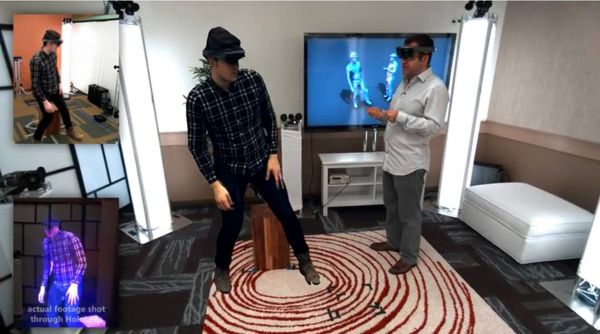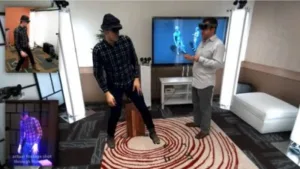In case AR/VR is not ‘blue sky’ enough for you, Microsoft is upping its game by talking about Holoportation. The firm is using the term to describe a method of advanced video conferencing, where the combination of 3D cameras with augmented reality headsets creates an augmented reality meeting between two people.
Both individuals use a set of 3D cameras to create 3D models of themselves, that are then transmitted to the other location where they can be viewed from all directions via the augmented reality headset. This means that when you are walking around the other person you can see his back. As Microsoft is using its HoloLens headset, it has created the name Holoportation as a reference to the device.

They published a video (available on YouTube http://tinyurl.com/hz65jcx) describing the whole process. They also show how the whole thing works today. There is some obvious time lag in between the interactions, but in principle this should work. Of course the shown video is more of a marketing piece than a real demonstration. The video streams are mixed and shown as one, since we don’t have the headset to see how the person looks in augmented reality.
In one part of the video the presenter shows what the created 3D depth map looks like. This gives a good measure of the image quality that can be expected from such a set up at this time. There is some time lag during fast movements, that may create motion artifacts in the headset image but individuals should be at least recognizable. (Microsoft says in its video that it has developed new depth cameras to support high quality depth maps).
They are also suggesting recording such sessions and creating virtual memories in 3D. This is not so different from a 3D camera, a technology that has not, so far, taken the consumer electronics market by storm. Of course you are adding a 360 degree capability that creates more of a virtual object than a virtual image. Walking around an object and seeing it from all sides is big step forward, not only for consumers but also for professionals markets such as education and visualization, for example. Microsoft did not say what they need in terms of computer power and storage requirements to create such an experience. – NH

